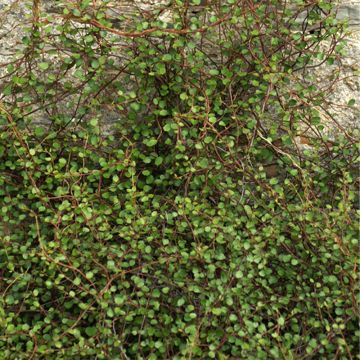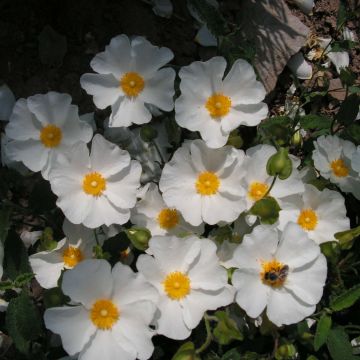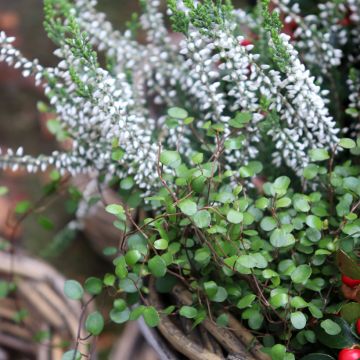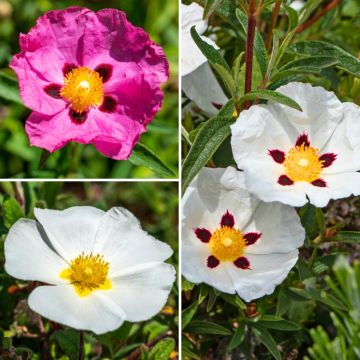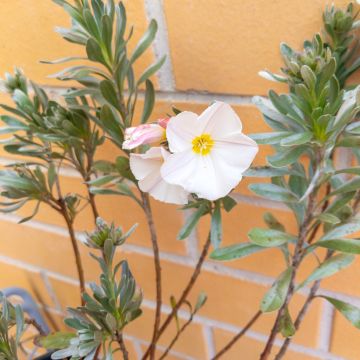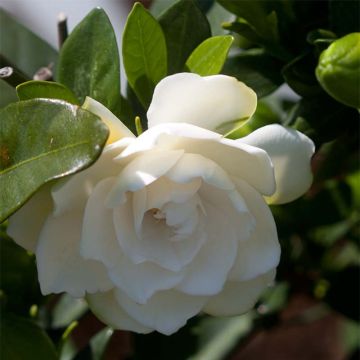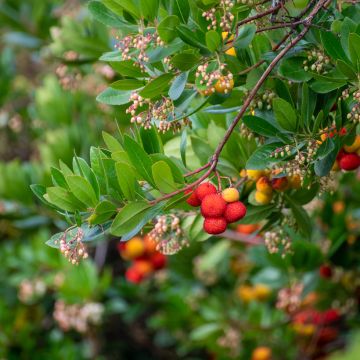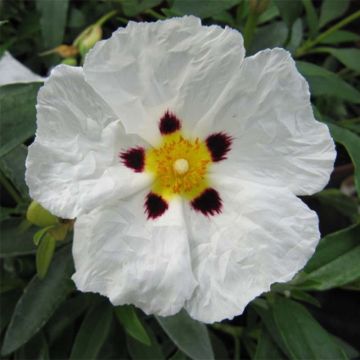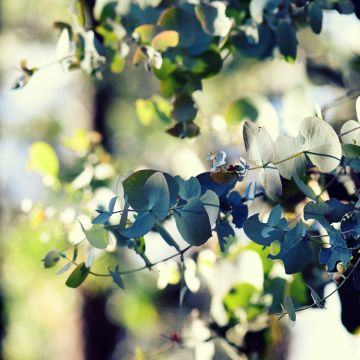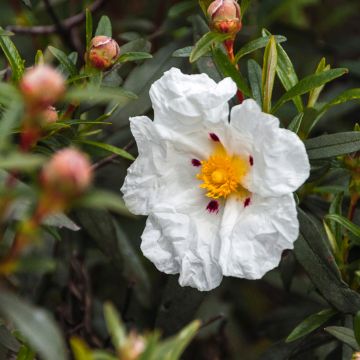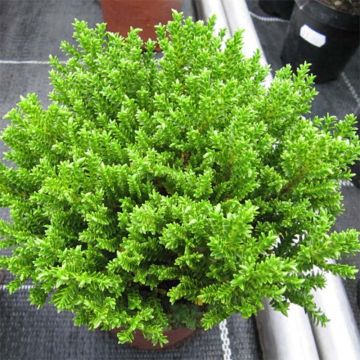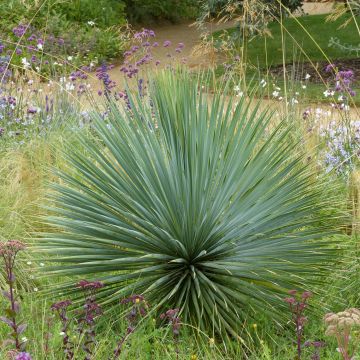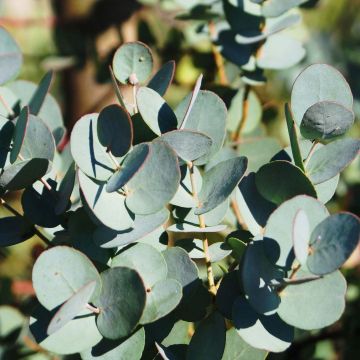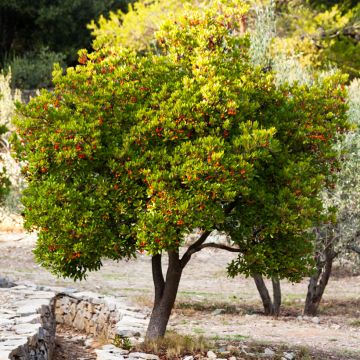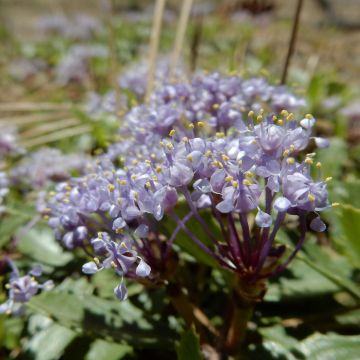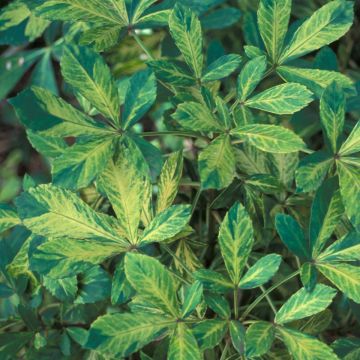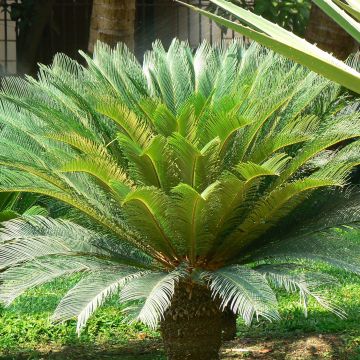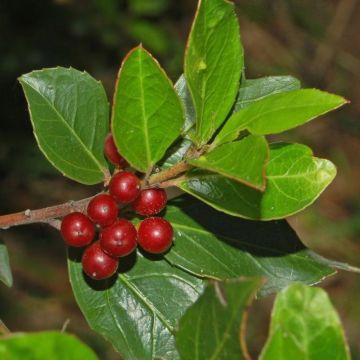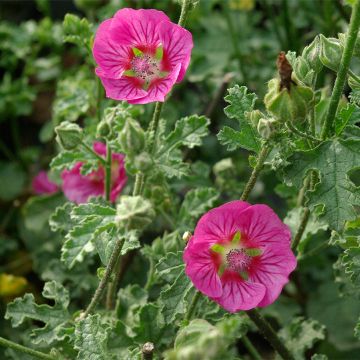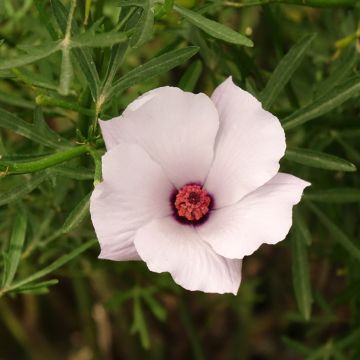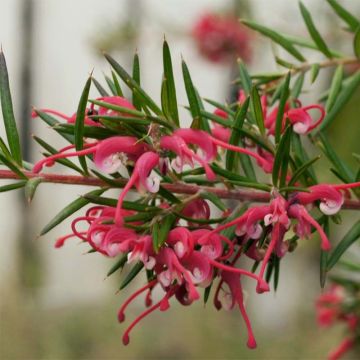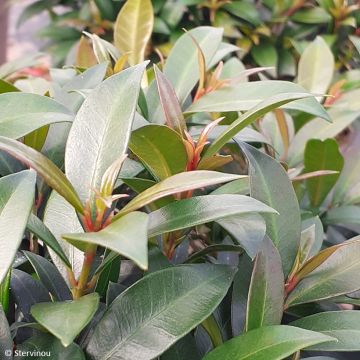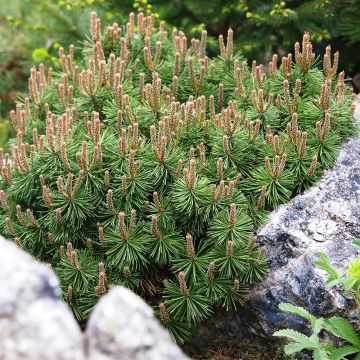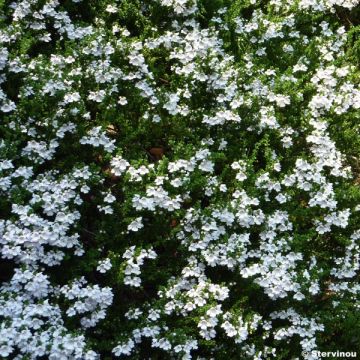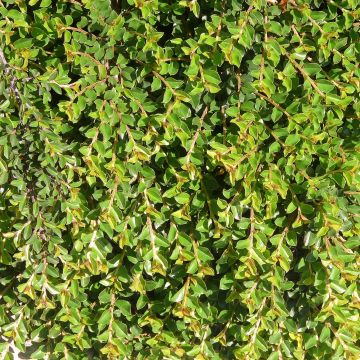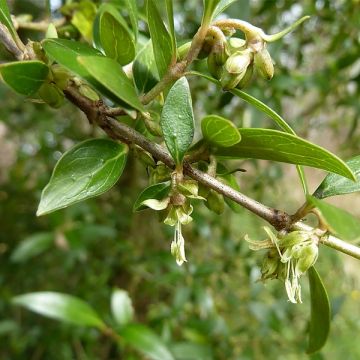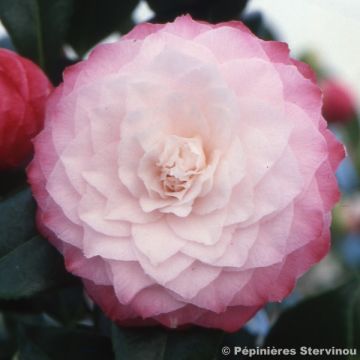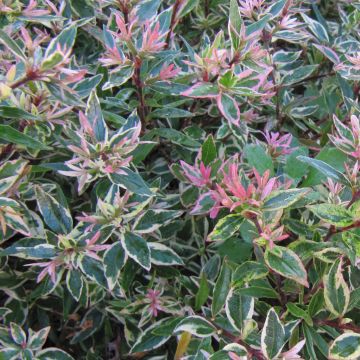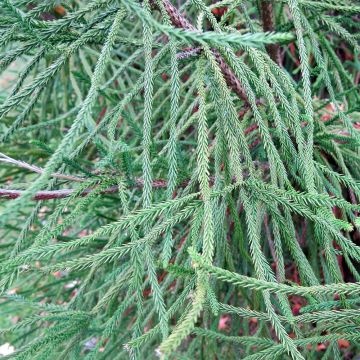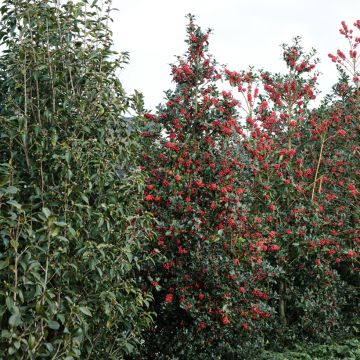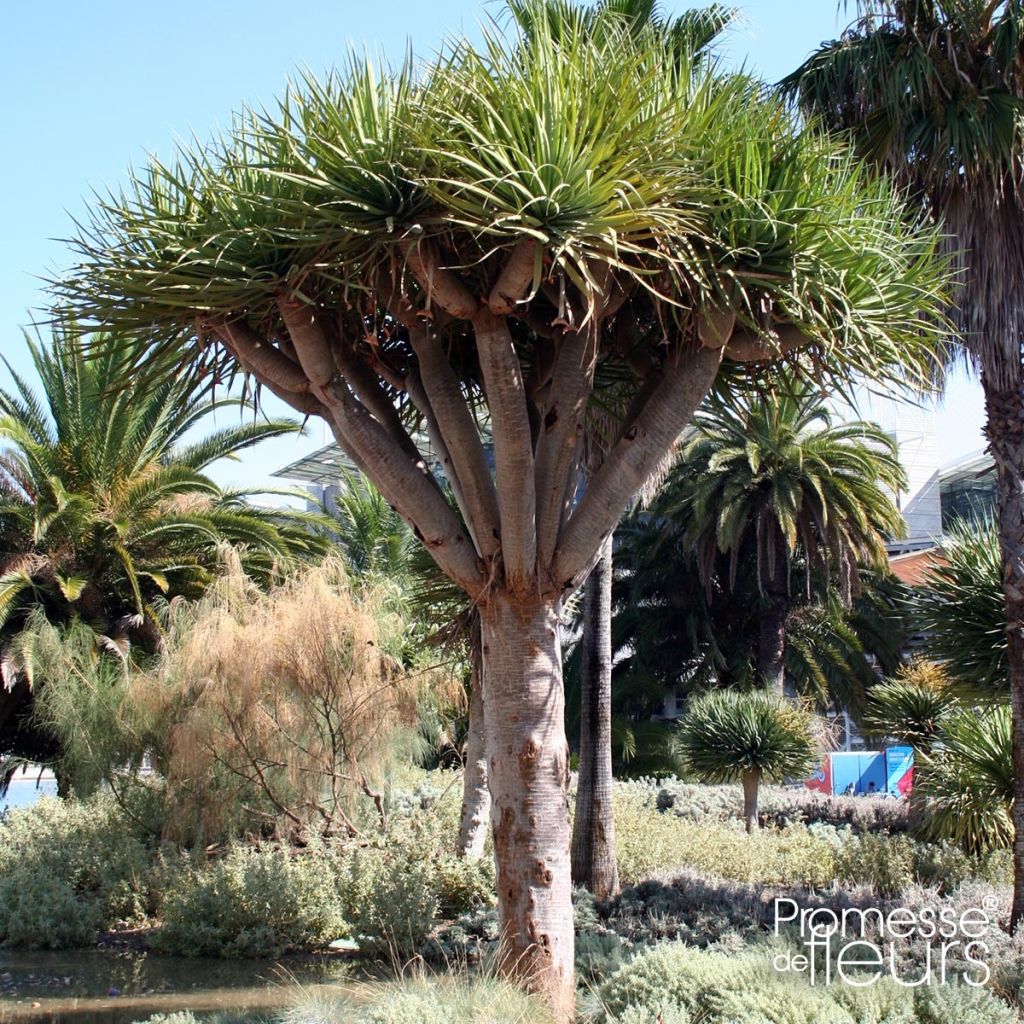

Dracaena draco - Dragonnier des Canaries
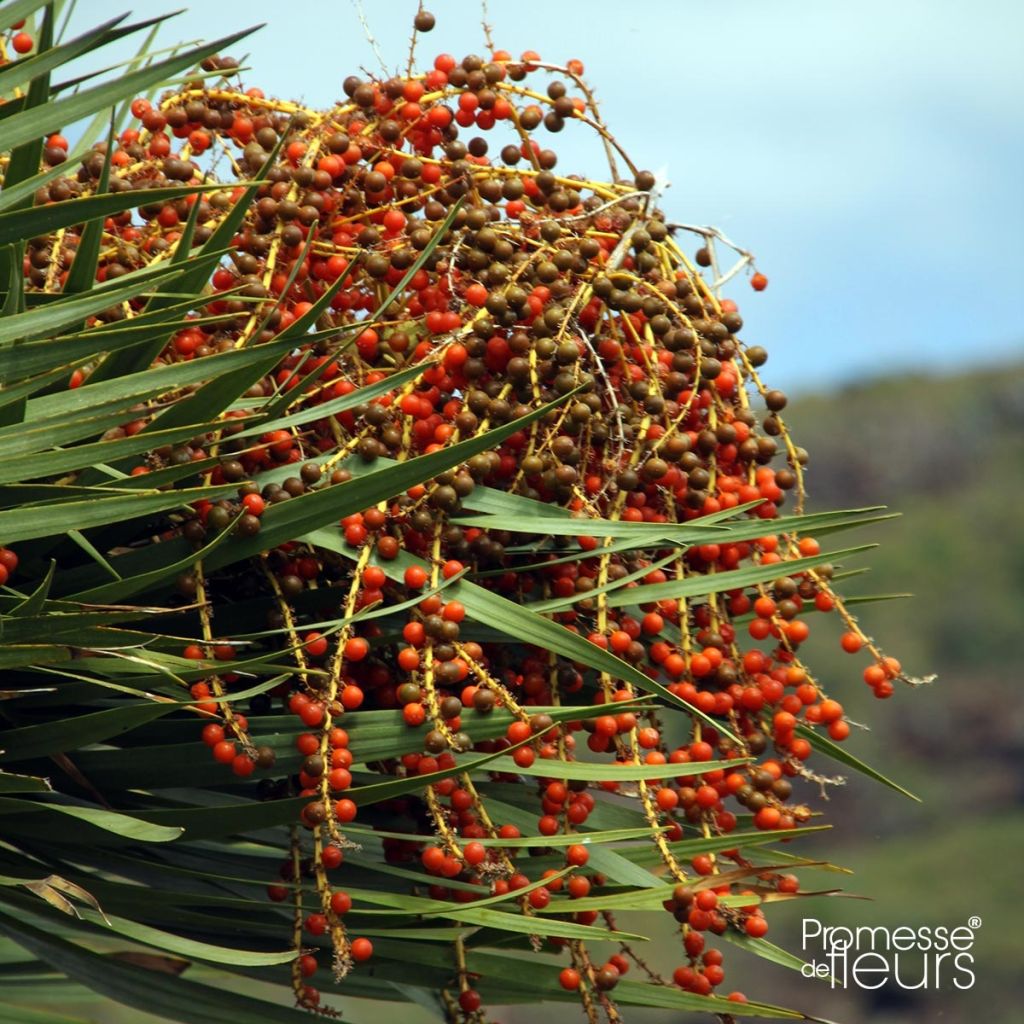

Dracaena draco - Dragonnier des Canaries
Dracaena draco - Dragon Tree
Dracaena draco
Dragon Tree
Why not try an alternative variety in stock?
View all →This plant carries a 24 months recovery warranty
More information
We guarantee the quality of our plants for a full growing cycle, and will replace at our expense any plant that fails to recover under normal climatic and planting conditions.
From €5.90 for pickup delivery and €6.90 for home delivery
Express home delivery from €8.90.
Does this plant fit my garden?
Set up your Plantfit profile →
Description
Dracaena draco is the Latin name of the Canary Island Dragon Tree, an emblematic tree-like plant from the eponymous islands where it is now endangered. It is a frost-sensitive species, extraordinarily unusual due to its umbrella-like habit: supported by a trunk that branches after each flowering, its crown is composed of multiple juxtaposed rosettes where long blue-green leaves are tightly packed. The dragon tree gets its other name, 'Dragon's Blood', from the blood-red colour of the resinous sap that exudes from its trunk when cut. It is mostly grown in pots, as its hardiness does not exceed -2°C (28.4 °F) for a mature specimen. It can be taken out on the terrace or balcony from April to October and brought indoors to protect it from frost in winter.
Dracaena draco belongs to the Liliaceae or Dracaenaceae family, depending on the classification. It is native to the Canary Islands (Tenerife, Gran Canaria), Cape Verde, Madeira and Morocco. In the wild, the common dragon tree can reach a height of 20 m (65 ft 7 in) and a spread of 8 to 9 m (26 ft 2 in to 29 ft 6 in), and live for several centuries. When grown in pots, it will not exceed 2 m (6 ft 7 in) in height and 1.50 m (4 ft 11 in) in width.
Like palms, the Dracaena draco does not develop a true trunk, but a brown-coloured stipe, which is a large herbaceous stem made rigid and thick by a high number of fibres and sap-conducting vessels. The top of this stipe initially produces a single tuft of leaves. The first flowering occurs on plants at least 15 years old in the wild. It takes the form of small white-greenish flowers that are quite inconspicuous but fragrant, which produce small inedible red fruits. After flowering, the top of the stipe divides into several short "branches," and each new branching in turn produces a rosette of leaves. So that after several years, the top of the plant presents a massive canopy, in the shape of a more or less flattened or rounded spherical cap. The leaves, which persist throughout the year, are long and tapering and blue-green. The resinous sap that flows from wounds takes on a reddish-brown colour as it dries. It is recognized for its medicinal properties and used in cosmetics.
With its characteristic silhouette, the Canary Island Dragon Tree is a very beautiful conservatory or indoor plant, to be showcased in a contemporary or exotic-inspired decor. Fans of unusual and beautiful plants can also adopt agaves, banana trees, baobabs, or even the bird of paradise Strelitzia reginae to bring a beautiful tropical touch to the terrace or conservatory.
Report an error about the product description
Dracaena draco - Dragon Tree in pictures
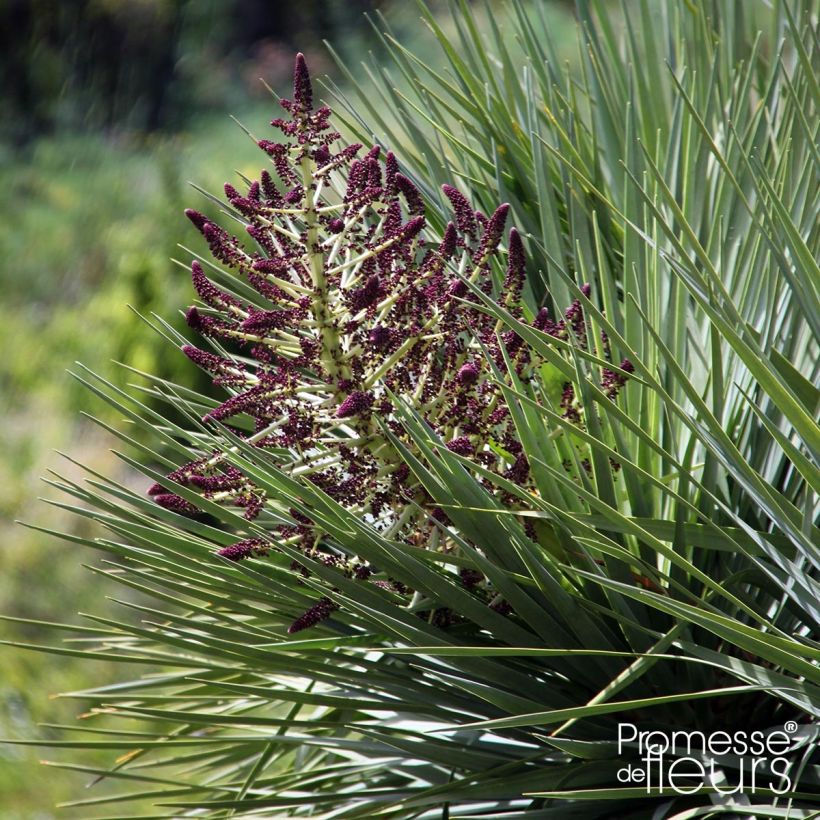

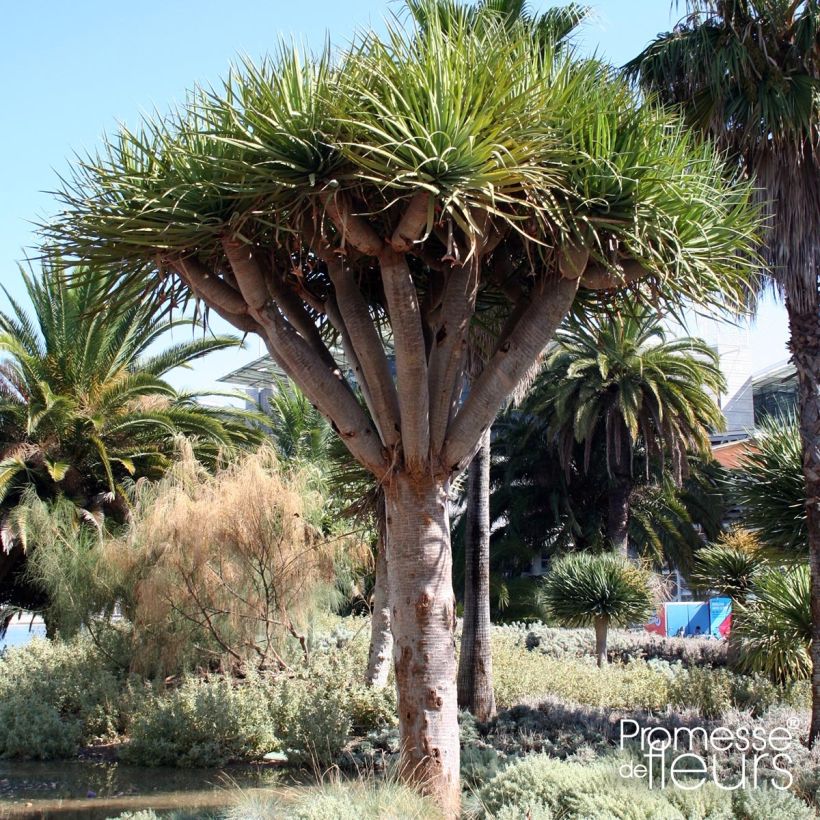

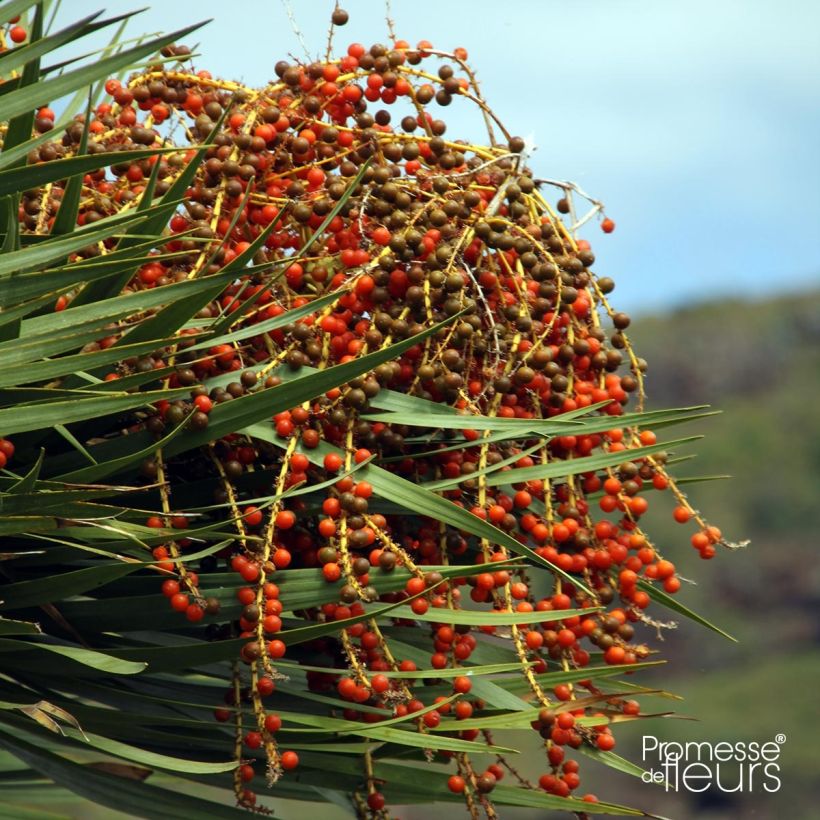

Plant habit
Flowering
Foliage
Botanical data
Dracaena
draco
Liliaceae (Dracaenaceae)
Dragon Tree
Mediterranean
Other Mediterranean shrubs
Planting and care
The Canary Dragon Tree is only cultivated in pots or containers under the majority of climates. The plant can spend the summer outdoors, but should be brought inside to the veranda or, at most, a very bright but not heated room as soon as the nighttime temperatures drop below 3°C (37.4 °F) (usually in October). The Dragon Tree is a tree of mild and warm climate, which does not tolerate frost below -2°C (28.4 °F). It dislikes drafts and excessively dry atmospheres: indoors, place its pot on a bed of clay balls soaked in water and regularly spray the foliage.
The Dragon Tree requires well-drained soil, a mixture of potting soil, garden soil, and sand will be suitable, or use cactus soil, and a large pot measuring 30 to 40 cm (11.8 to 15.7 in) in all directions, with holes at the bottom. Do not put a saucer under the pot. Place in a sunny but not scorching exposure. Be careful with excess moisture. Repot every two years, or as soon as the roots appear on the surface of the growing medium.
Water moderately, more when it is very hot. Water needs can be assessed by observing both the soil or substrate, and the habit of the foliage. When the plant needs water, its leaves tend to droop a little. It is not essential to regularly feed, only from June to September. Regularly remove wilted leaves and flowers.
Indoors, beware of attacks by spider mites.
Planting period
Intended location
Care
This item has not been reviewed yet - be the first to leave a review about it.
Evergreen shrubs
Haven't found what you were looking for?
Hardiness is the lowest winter temperature a plant can endure without suffering serious damage or even dying. However, hardiness is affected by location (a sheltered area, such as a patio), protection (winter cover) and soil type (hardiness is improved by well-drained soil).

Photo Sharing Terms & Conditions
In order to encourage gardeners to interact and share their experiences, Promesse de fleurs offers various media enabling content to be uploaded onto its Site - in particular via the ‘Photo sharing’ module.
The User agrees to refrain from:
- Posting any content that is illegal, prejudicial, insulting, racist, inciteful to hatred, revisionist, contrary to public decency, that infringes on privacy or on the privacy rights of third parties, in particular the publicity rights of persons and goods, intellectual property rights, or the right to privacy.
- Submitting content on behalf of a third party;
- Impersonate the identity of a third party and/or publish any personal information about a third party;
In general, the User undertakes to refrain from any unethical behaviour.
All Content (in particular text, comments, files, images, photos, videos, creative works, etc.), which may be subject to property or intellectual property rights, image or other private rights, shall remain the property of the User, subject to the limited rights granted by the terms of the licence granted by Promesse de fleurs as stated below. Users are at liberty to publish or not to publish such Content on the Site, notably via the ‘Photo Sharing’ facility, and accept that this Content shall be made public and freely accessible, notably on the Internet.
Users further acknowledge, undertake to have ,and guarantee that they hold all necessary rights and permissions to publish such material on the Site, in particular with regard to the legislation in force pertaining to any privacy, property, intellectual property, image, or contractual rights, or rights of any other nature. By publishing such Content on the Site, Users acknowledge accepting full liability as publishers of the Content within the meaning of the law, and grant Promesse de fleurs, free of charge, an inclusive, worldwide licence for the said Content for the entire duration of its publication, including all reproduction, representation, up/downloading, displaying, performing, transmission, and storage rights.
Users also grant permission for their name to be linked to the Content and accept that this link may not always be made available.
By engaging in posting material, Users consent to their Content becoming automatically accessible on the Internet, in particular on other sites and/or blogs and/or web pages of the Promesse de fleurs site, including in particular social pages and the Promesse de fleurs catalogue.
Users may secure the removal of entrusted content free of charge by issuing a simple request via our contact form.
The flowering period indicated on our website applies to countries and regions located in USDA zone 8 (France, the United Kingdom, Ireland, the Netherlands, etc.)
It will vary according to where you live:
- In zones 9 to 10 (Italy, Spain, Greece, etc.), flowering will occur about 2 to 4 weeks earlier.
- In zones 6 to 7 (Germany, Poland, Slovenia, and lower mountainous regions), flowering will be delayed by 2 to 3 weeks.
- In zone 5 (Central Europe, Scandinavia), blooming will be delayed by 3 to 5 weeks.
In temperate climates, pruning of spring-flowering shrubs (forsythia, spireas, etc.) should be done just after flowering.
Pruning of summer-flowering shrubs (Indian Lilac, Perovskia, etc.) can be done in winter or spring.
In cold regions as well as with frost-sensitive plants, avoid pruning too early when severe frosts may still occur.
The planting period indicated on our website applies to countries and regions located in USDA zone 8 (France, United Kingdom, Ireland, Netherlands).
It will vary according to where you live:
- In Mediterranean zones (Marseille, Madrid, Milan, etc.), autumn and winter are the best planting periods.
- In continental zones (Strasbourg, Munich, Vienna, etc.), delay planting by 2 to 3 weeks in spring and bring it forward by 2 to 4 weeks in autumn.
- In mountainous regions (the Alps, Pyrenees, Carpathians, etc.), it is best to plant in late spring (May-June) or late summer (August-September).
The harvesting period indicated on our website applies to countries and regions in USDA zone 8 (France, England, Ireland, the Netherlands).
In colder areas (Scandinavia, Poland, Austria...) fruit and vegetable harvests are likely to be delayed by 3-4 weeks.
In warmer areas (Italy, Spain, Greece, etc.), harvesting will probably take place earlier, depending on weather conditions.
The sowing periods indicated on our website apply to countries and regions within USDA Zone 8 (France, UK, Ireland, Netherlands).
In colder areas (Scandinavia, Poland, Austria...), delay any outdoor sowing by 3-4 weeks, or sow under glass.
In warmer climes (Italy, Spain, Greece, etc.), bring outdoor sowing forward by a few weeks.

































